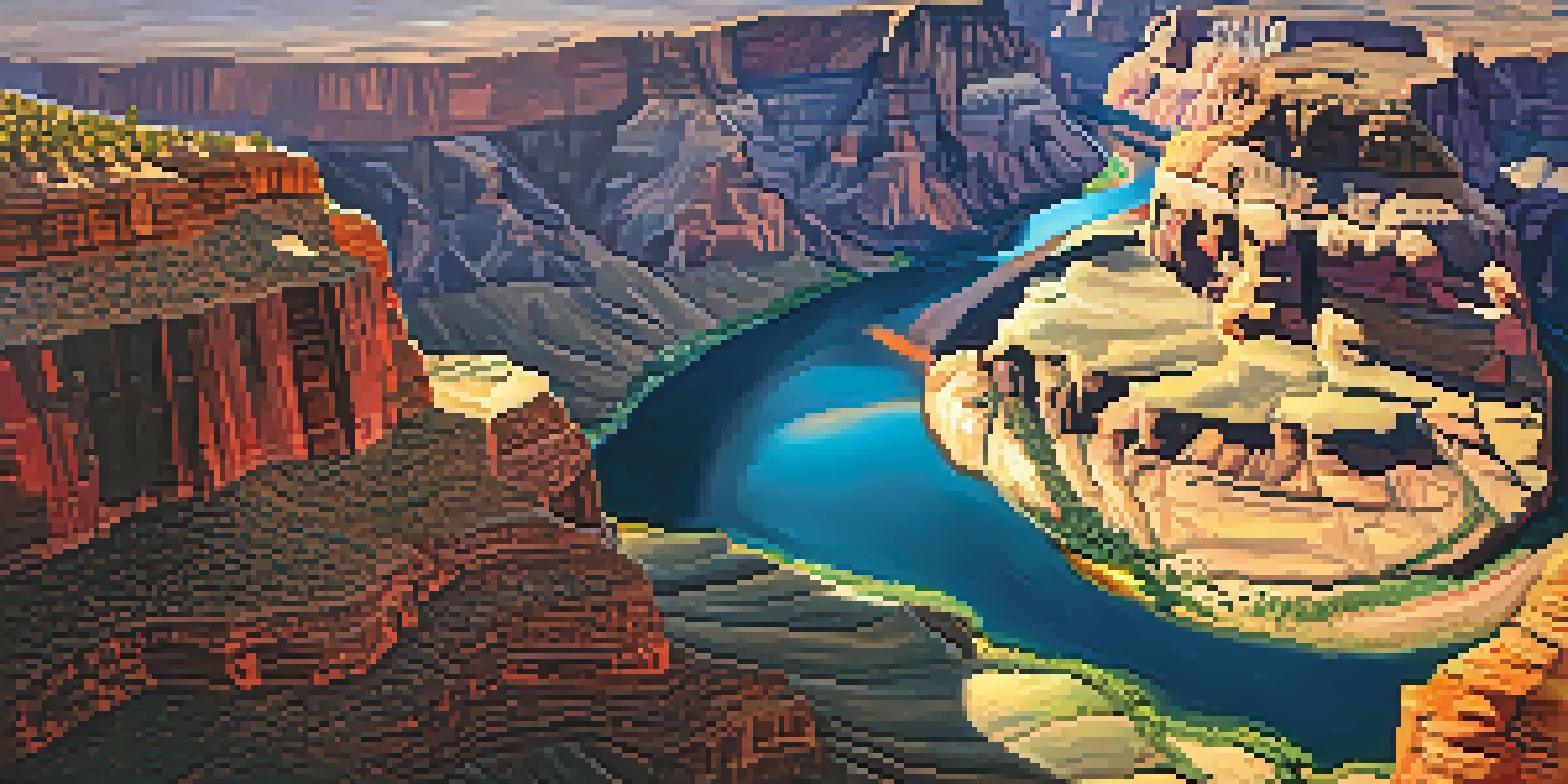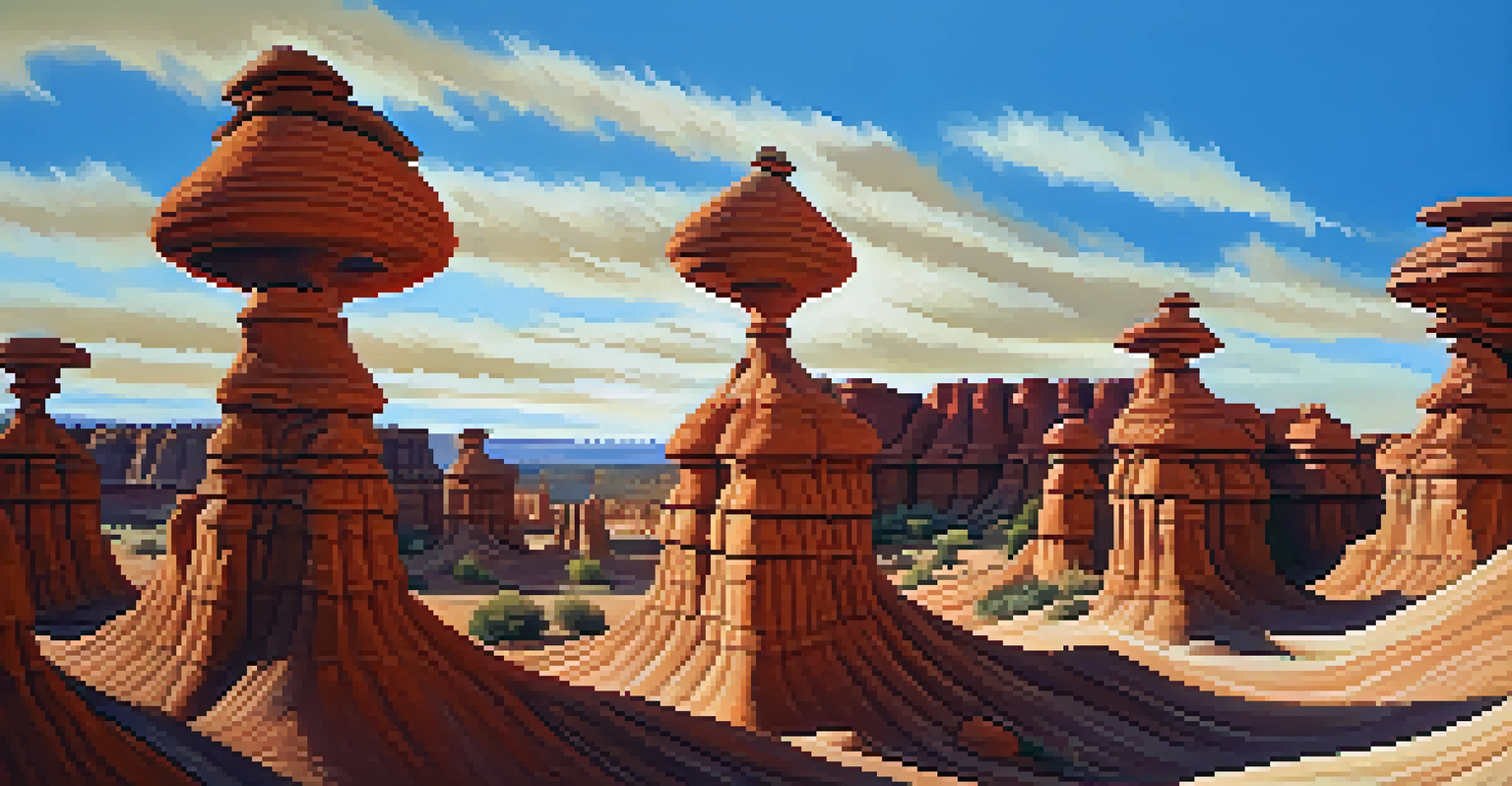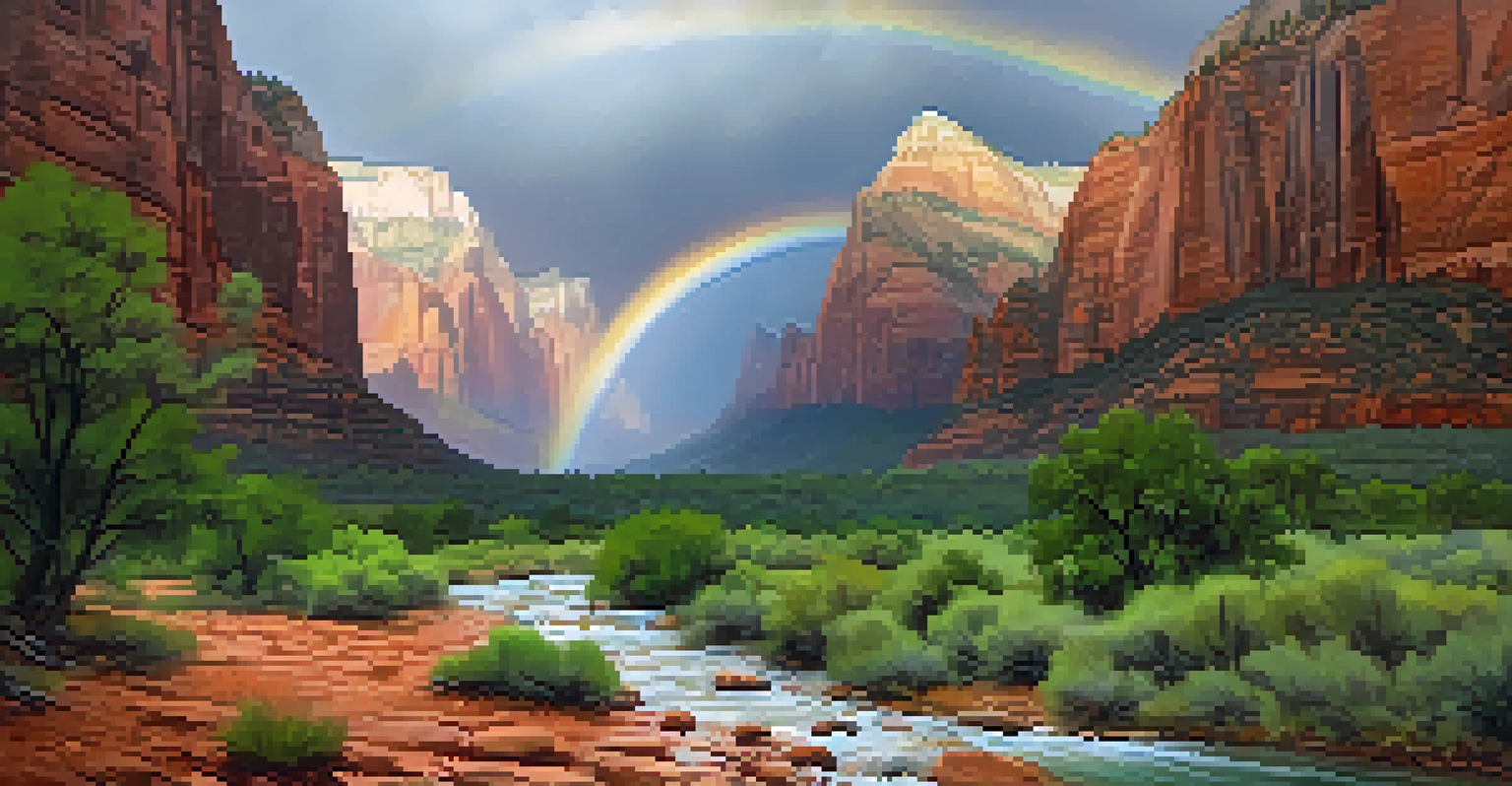The Role of Erosion in Utah's Stunning Landforms and Canyons

Understanding Erosion: The Basics and Beyond
Erosion is a natural process that involves the wearing away of rocks and soil. It can occur through various agents like wind, water, and ice, gradually reshaping the land. In Utah, the dramatic landscapes we see today are largely the result of these ongoing erosive forces.
Erosion is the gradual destruction or diminution of something.
Think of erosion as nature's sculptor, chiseling away at the rock to create stunning formations. Over thousands of years, these processes can carve out canyons, create mesas, and form unique rock structures. This continuous cycle of erosion and deposition contributes to the ever-changing beauty of Utah's scenery.
Understanding how erosion works gives us insight into the geological history of the region. It's fascinating to consider that the magnificent arches and towering cliffs around us were once just solid rock, patiently transformed by the relentless forces of nature.
The Role of Water Erosion in Shaping Utah's Canyons
Water erosion plays a crucial role in shaping the canyons of Utah, especially through rivers and rainfall. As water flows over rock surfaces, it gradually wears them down, creating deep gorges and dramatic canyon walls. The Colorado River, for instance, has carved out the stunning Grand Canyon over millions of years.

Rainfall also contributes to the erosion process, particularly during heavy storms when water rushes down slopes. This can lead to flash floods, which can rapidly erode soil and rock, deepening canyons like Zion and Bryce Canyon. It's a reminder of nature's power and the delicate balance within these ecosystems.
Erosion Shapes Utah's Landscapes
Erosion is a natural sculpting process that transforms rocks and soil into stunning geological formations over time.
These canyons not only serve as breathtaking tourist destinations but also reveal a rich geological history. Each layer of rock tells a story of the Earth's past, showcasing different periods and environments that have existed long before humans arrived.
Wind Erosion: Sculpting Utah's Unique Rock Formations
In Utah, wind erosion is just as significant as water erosion, particularly in areas like the San Rafael Swell. Wind can carry tiny particles that sandblast rock surfaces, gradually shaping them into unique formations. This process creates fascinating structures such as hoodoos and spires found in places like Goblin Valley State Park.
The earth has music for those who listen.
Imagine the wind as an artist, using its invisible brush to create intricate designs on the canvas of rock. Over time, these formations become iconic symbols of Utah's diverse landscape, attracting photographers and nature enthusiasts alike. The whimsical shapes are a testament to the power of erosion in its many forms.
Wind erosion also influences the desert environment, affecting soil distribution and plant life. Understanding this process helps us appreciate the delicate balance of life in these harsh conditions, where even the smallest changes can have significant impacts on the ecosystem.
Geological History: Erosion Revealing Layers of Time
Erosion not only shapes the landscape but also unveils the geological history of the Earth. As layers of rock are eroded away, they expose fossils and minerals that offer clues about past environments. In Utah, you can find remnants of ancient oceans, volcanoes, and even dinosaur tracks embedded in the rock.
This geological layering is like a storybook, with each page representing a different chapter in Earth's history. When we visit places like Arches National Park, we can literally walk through time, experiencing the changes that have occurred over millions of years. It's a humbling reminder of our planet's dynamic nature.
Water and Wind: Key Erosion Agents
Both water and wind play significant roles in eroding Utah's terrain, creating iconic canyons and unique rock structures.
By studying these exposed layers, geologists can better understand the processes that have shaped not only Utah but the entire planet. Each layer tells us something unique, contributing to our knowledge of Earth's evolution and the forces that continue to shape it today.
Human Impact: Erosion and Our Changing Environment
While erosion is a natural process, human activities can accelerate it, leading to significant changes in Utah's landscapes. Urban development, agriculture, and deforestation can disturb the soil and vegetation, making areas more susceptible to erosion. This has become a pressing concern in many regions, affecting both the environment and local ecology.
For instance, construction sites with bare soil can lead to increased runoff and erosion, washing away valuable topsoil and disrupting natural habitats. It's crucial to recognize our role in this process and consider sustainable practices that minimize our impact on the land. Simple measures, like planting vegetation, can help stabilize soil and reduce erosion.
By understanding the relationship between human activity and erosion, we can work towards preserving Utah's stunning landscapes for future generations. This not only benefits the environment but also ensures that we continue to enjoy the breathtaking beauty of canyons and landforms that make Utah unique.
Protecting Utah's Landscapes: Erosion Control Methods
To combat the effects of erosion, various methods can be employed to protect and preserve Utah's landscapes. Techniques such as planting native vegetation, building terraces, and using erosion control blankets can help stabilize soil and limit runoff. These methods are essential in areas prone to erosion, especially after heavy rainfall.
Community involvement is also key in these efforts. Organizations and local governments often run programs to educate residents about erosion control practices that can be implemented at home. Simple actions like creating rain gardens or using permeable paving can make a big difference in reducing erosion.
Human Impact on Erosion Rates
Human activities can accelerate erosion, necessitating sustainable practices to protect Utah's delicate ecosystems.
By actively participating in erosion control initiatives, we can help maintain Utah's natural beauty. It's a collective effort that benefits not only the environment but also the communities that rely on these landscapes for recreation, tourism, and their overall quality of life.
Conclusion: The Ongoing Dance of Erosion and Landscapes
Erosion is a powerful force that shapes the landscapes we cherish in Utah. From the majestic canyons to the unique rock formations, its impact is evident and ongoing. Understanding this process helps us appreciate the beauty of our surroundings and the natural history embedded in the land.
As we navigate this intricate relationship between erosion and our environment, it’s vital to foster a sense of stewardship. By recognizing the importance of erosion control and sustainable practices, we can contribute to the preservation of Utah's stunning landscapes for generations to come.

Ultimately, the story of erosion is one of change and resilience. Each curve and crevice in Utah's landforms tells a tale of time, reminding us of the delicate balance we must maintain to protect the remarkable beauty that nature has crafted over millennia.